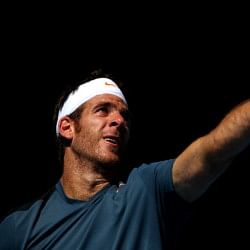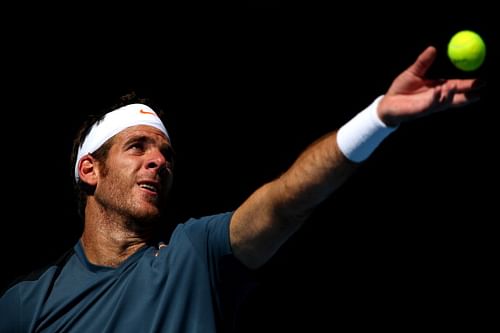
Juan Martin Del Potro: The world's an oyster

Juan Martin Del Potro
He’s called the ‘Tower of Tandil’. He stands tall, nearly gigantic, with an arsenal so varied and powerful that it can shock and rattle even the most comfortable of players on its day. It’s this versatility that helped Juan Martin Del Potro win his first Grand Slam at the age of 21, defeating crowd favourite Roger Federer at the US Open in 2009. And it’s this variety combined with his own, unique brand of determination that helped him recover from his wrist injury and regain his form and ranking back into the top 10. These facets go on to assert and emphasise the Argentine’s capabilities as an avant-garde tennis professional.
But where the future – however promising – remains largely unknown, it’s the present that reaffirms Del Potro’s strong presence, even though it comes in the wake of Rafa’s emphatic triumph on the hard courts at Indian Wells. The loss was disappointing, the final culmination probably not as fulfilling as the exciting road to the finals, but still, there were so many positives to take and imbibe from his match against the Spaniard.
Del Potro’s amazing run to the finals included two marauding rampages against higher-ranked opponents, both of whom who had an impressive head-to-head record against him. Incidentally, against both Murray and Djokovic, the Argentine was trailing before he rebounded to end their in-form run. And ironically, though it was him who lost the lead against Rafa in the finals at Indian Wells, Juan Martin Del Potro’s rhythm and mental composure still remain unshakeable and intact for the most part.
Unlike many of his contemporaries who face a constant struggle to overcome their mental barriers, the Argentine has pretty much been a composed figure, even in victory as in defeat. This sense of equilibrium, often reflected in his words and in his conduct, has thus put him on a distinguished pedestal, making Juan Martin Del Potro an incomparable icon in his own right and garnering him the respect of his peers.
There’s not a single top-ranked player who would shrug off the Argentine casually or discount his current ranking as an evaluation of his true capabilities. Del Potro may have lost precious ground since injury temporarily stalled him three years ago but as is with great players and resonant comebacks, Del Potro has just slotted back into the ranks, as if he never left in the first place. And though his present ranking is nowhere near his previous best, it only adds to his intrigue, making him an even more dangerous and unpredictable player to get past. On his good days, Del Potro can run riot on the court as an aggressor, just as he can flip out to a more laidback nonchalance, the latter proving just as effective as the former. It’s this trait of unpredictability that lends even more tangibility to his dangerousness on any playing surface.
If the sport were to be recounted in terms of milestones, Juan Martin Del Potro’s name would very well feature alongside the very best achievements. The top ranked tennis player from his country, Del Potro has gone on to become an essential member of the Argentinean Davis Cup, helping his country reach the finals in 2011. And though, despite all these successes – including his bronze medal winning heroics at the London Olympics – his conquest at the Masters still remains unopened; it’s the wait that makes the prospect all the more achievable and realisable. With several more Masters to go this season, the next one right on the footsteps of Indian Wells, the target doesn’t really seem that far off. Rather more like a case of when than if. Till that happens, the tennis world truly remains an oyster for Juan Martin Del Potro. To carve his name on as many silverware as he can, and then on some more, as only true champions can.